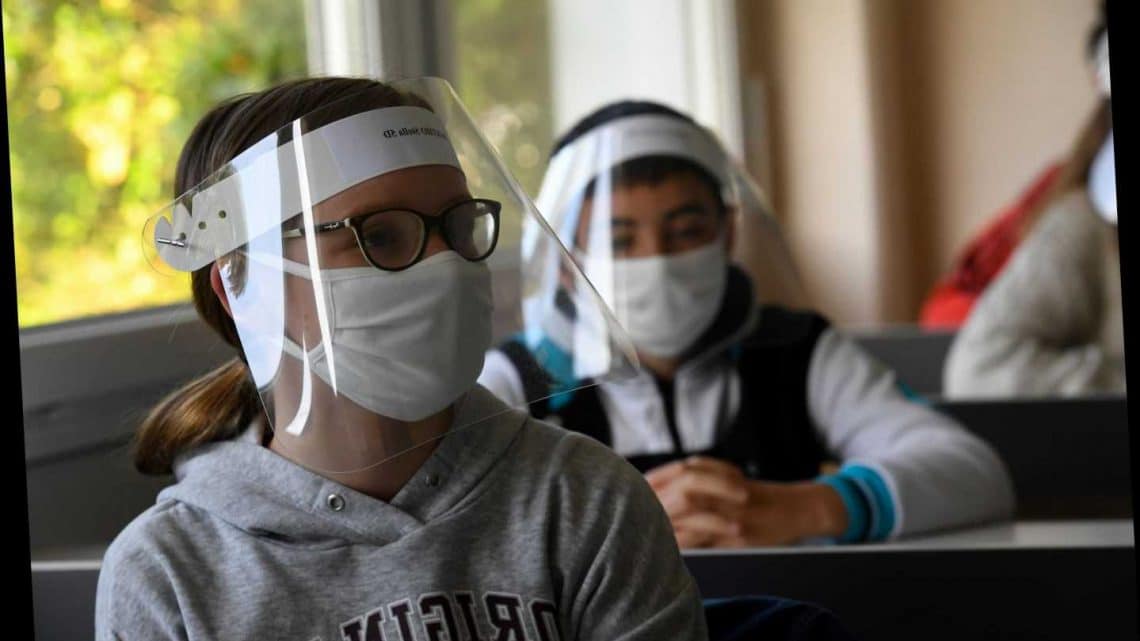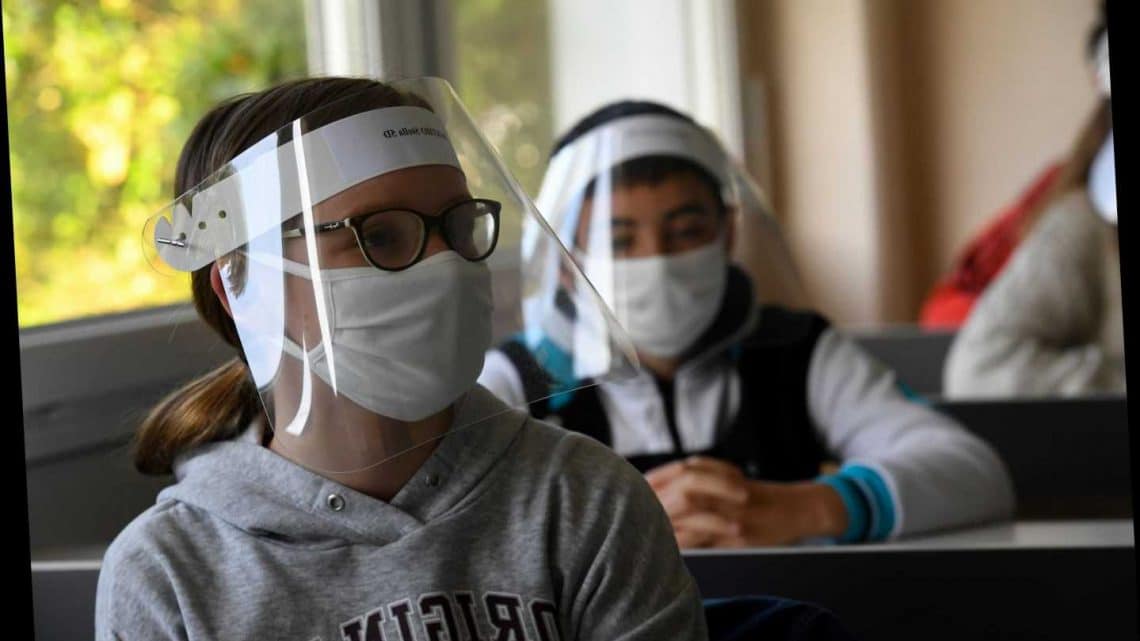
“We should never fully return to our maskless society where only health care providers donned a mask, because judicious use of masks will continue to save lives” (emphasis added). This is not the fringe statement of some obscure crank. It is the view of two doctors at New York’s Mount Sinai School of Medicine, one of the nation’s most prestigious medical schools, writing in a New York Daily News op-ed this spring.
Now that the COVID-19 pandemic is retreating, it may seem absurd to propose further mask mandates in response to lesser—or even seasonal—viral threats. But Julia Carrie Wong, writing in the Guardian, reports that many Americans like their masks just fine. Francesca, a 46-year-old, fully vaccinated professor in New York, will not abandon her “invisibility cloak” just yet. “It has been such a relief to feel anonymous,” she explains. “It’s like having a force field around me that says, ‘don’t see me.’” Becca, a 25-year-old bookstore employee near Chicago, reports that she and her co-workers “prefer not having customers see our faces,” because “[w]ith a mask, I don’t have to smile at them or worry about keeping a neutral face.” Bob, a 75-year-old retiree in New Jersey, says wearing a mask “frees” him from having to “appear happy.” Aimee, a 44-year-old screenwriter in Los Angeles, likes the “emotional freedom” that comes from wearing a mask: “It’s almost like taking away the male gaze.”
Ostensibly, the point of wearing masks is not to furnish oneself with an emotional crutch but to prevent viral transmission. Many Americans have been taught to believe that masks work—at least a little—and that wearing them comes at a minimal cost. Nearly the opposite is true. The best scientific evidence invites a far less rosy assessment of masks’ effectiveness than is broadcast by public health officials. And the dubious health benefits of widespread mask-wearing come at an enormous social cost, which is almost never acknowledged by those writing and enforcing the mandates.
Seeing and showing the face is a fundamental aspect of human existence. A society that forgets this straightforward truth will likely also fail to realize that faceless people may make for compliant subjects but not generally for good citizens. (We may distinguish those cases when masks are worn for special occasions—Halloween, Carnevale, classical Greek plays.) Nor will COVID-19 be the last time public health officials and governors demand we embrace mask-wearing. The question is whether Americans—and the legislators who most closely represent them—will realize the high costs of wearing masks before this new and noxious practice becomes ingrained in our culture.
In its worldwide impact, the COVID-19 pandemic has been the worst in a century. As a threat to Americans’ health, however, it is closer to the 1968 Hong Kong flu or the 1957 Asian flu—neither of which noticeably altered Americans’ everyday lives—than to the 1918 Spanish flu. In a head-to-head comparison, COVID-19 makes the Spanish flu look like the Black Death of medieval Europe. According to the best available figures from the Centers for Disease Control and Prevention (CDC) and elsewhere, the typical American under the age of 40 in 1918 was more than 100 times as likely to die of the Spanish flu than the typical American under the age of 40 in 2020 was to die of COVID-19. Whereas COVID-19 sadly shortened the lives of many older people already in poor health, the Spanish flu took people in the prime of life and left orphans in its wake.
Americans’ reaction to COVID-19, however, has been radically different from their behavior in 1968, 1957, or even 1918. Writing in the Wall Street Journal, the Hoover Institution’s Niall Ferguson recalls that President Dwight Eisenhower asked Congress for $2.5 million in additional funding for the Public Health Service during the Asian flu. Overall, Congress has authorized about 2 million times that much for COVID-19. In 1957, there were no widespread school closures, travel bans, or mask mandates. Ferguson quotes one person’s recollection of those days: “For those who grew up in the 1930s and 1940s, there was nothing unusual about finding yourself threatened by contagious disease. Mumps, measles, chicken pox, and German measles swept through entire schools and towns; I had all four…. We took the Asian flu in stride.”
One major difference between then and now is the increased role of public health officials. Long before their ascension, Socrates made clear in Plato’s Republic that he did not want doctors to rule. Philosophers or even poets would be better governors of society, because they at least attempt to understand political and social life in its entirety and minister to the human soul. Doctors, by contrast, tend to disregard the soul: it is the nature of their art to focus on the body in lieu of higher concerns. Moreover, Greek philosophers and poets alike celebrated courage in the face of death—Plato’s Socrates and Homer’s Achilles were undeterred from their noble missions by fear of the grave. But rule by public health officials, under which we increasingly live today, encourages excessive risk-aversion and almost transforms cowardice into a virtue.
Wear the Mask, Neanderthal
Surgical masks were designed to protect patients’ wounds from becoming infected by medical personnel, not to prevent the spread of viruses. When COVID-19 hit our shores, the CDC initially recommended that most Americans not wear masks. On April 3, 2020, the CDC abruptly reversed this position. Surgeon General Jerome Adams explained that “new evidence” had revealed that “a significant portion of individuals with coronavirus lack symptoms” and “can transmit the virus to others before they show symptoms” (emphasis added).
As a rationale for wearing masks, this did not entirely make sense. According to the World Health Organization (WHO), “potentially pre-symptomatic transmission…is a major driver of transmission for influenza.” Yet the CDC does not (yet) recommend that seemingly healthy people wear masks during flu season. It seems likely that the CDC panicked in April and wanted to be seen as doing something. Plus, public health officials are naturally enthusiastic about public health interventions. Here was an opportunity to introduce an intervention that would previously have been unthinkable to Americans. Granted, the research on masks’ effectiveness, or lack thereof, had not changed to suggest healthy people should wear masks. But why quibble about evidence in the interest of a good cause?
The day after the CDC endorsed nationwide mask-wearing, President Trump announced, “I won’t be doing it personally.” From that instant, the mask quickly became a symbol of civic virtue—a sort of Black Lives Matter flag that could be hung from one’s face. For many it conveyed a trio of virtues: I’m unselfish; I’m pro-science; I’m anti-Trump. What it also conveyed, incidentally, was rejection of longstanding Western norms, unhealthy risk-aversion, credulous willingness to embrace unsupported health claims, and a pallid view of human interaction.
Fair Use Excerpt. Read the whole article here.

